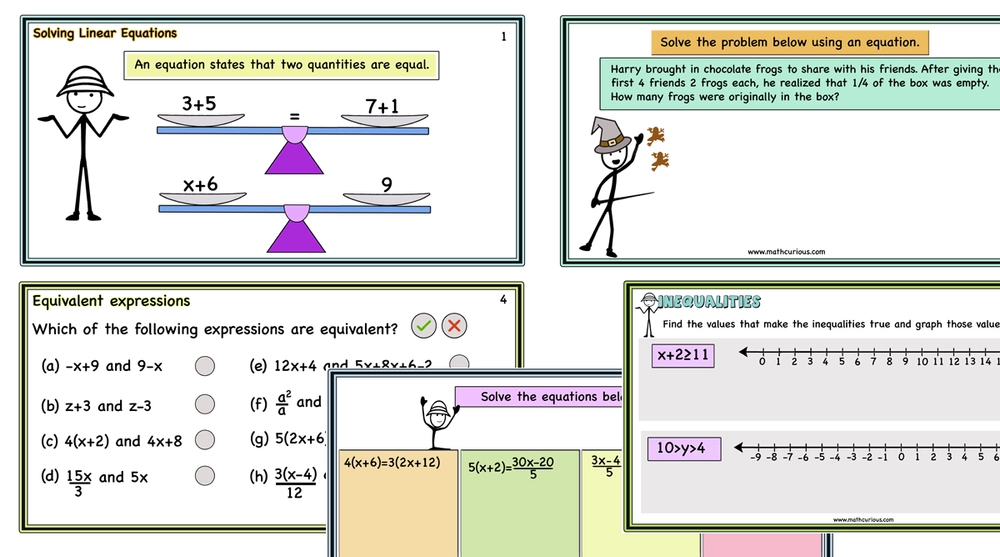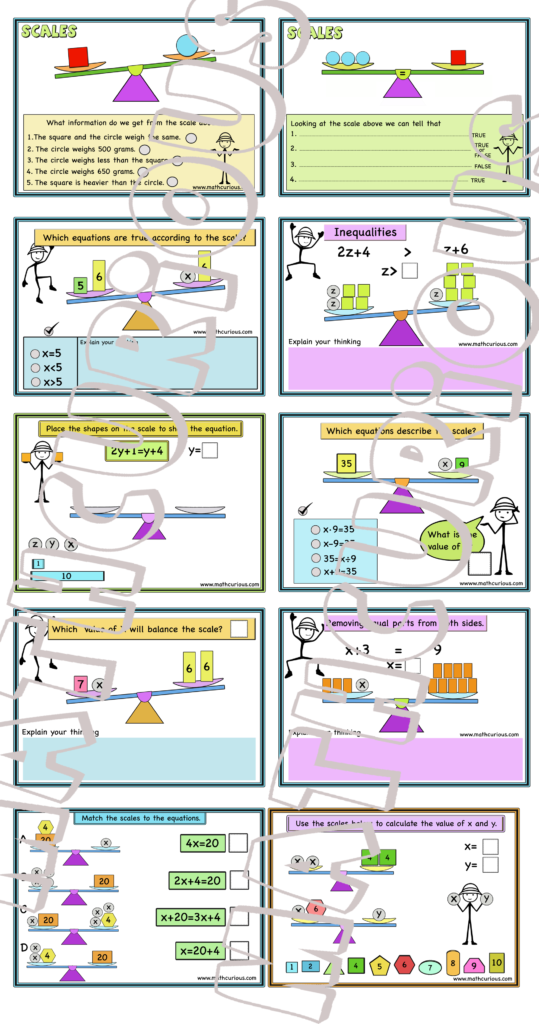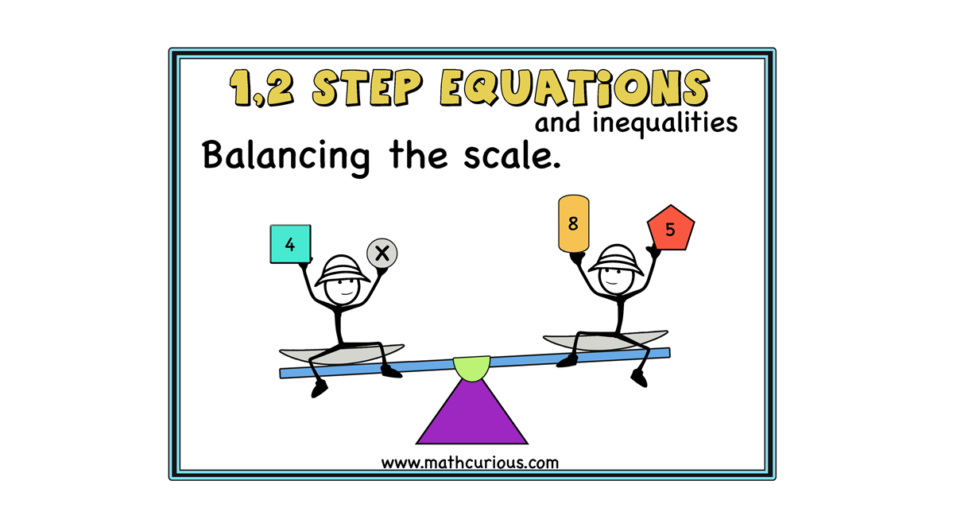Combining letters with numbers and mathematical operations is new and exciting for students starting with basic operations. I find that many students see these equations as puzzles and love to solve them. As the equations get more complicated, however, including fractions, exponents, and more, many students start getting frustrated.
Algebra
As they start with algebra it is important for students to understand how variables work and the concept of equivalence between two expressions. Two one-variable expressions with the same variable are equivalent if they are equal for every value of the variable for which at least one of the expressions is defined.
For example, for 2x+3=x+7 there is only one value of x that makes the equation true.
Removing common equal parts from each side (x) will help simplify the expressions. x+3=7 The equation is like a scale, if you change something on one side you need to change it on the other side as well otherwise the scale will not balance. Of course, once the students understand this they will move on to simplifying more complicated expressions and isolating the variables.
More algebra resources here (expressions, linear equations, inequalities)

Inequalities
For inequalities (strict and non-strict) the value of the variable can be shown on a number line in two ways.
x+3>7

If x+3 is equal and greater than 7 then the circle on the number line will be filled as 4 is included in the values of the variable that make the inequality true.
Balance the scales Resource
We are starting with basic 1 and 2-step equations and inequalities and I have created a collection of task cards (print and digital) to practice and understand the concept before we move on to more complicated equations and inequalities. These activities are meant to be simple for the students to understand equations and inequalities as scales. Sample below

The activities include
- Understand the equivalence concept using scales
- TRUE FALSE statements according to the scale.
- Information provided by the scales.
- Remove and place weights to balance the scale (remove add equal weights on both sides)
- Calculate the value of the variable that balances the scale.
- Select the correct equation/inequality for the scale.
- Match the equations to the scales.
- Match the inequalities to the scales.
- Removing equal parts from both sides. Simplifying the equations and inequalities.
- Calculate the value of the variable using inequalities x>6
- Comparing the values of variables based on scales that show inequalities.
- Build the scale to show the equations and inequalities.
- 2 step equations. Using two scales/equations to find the x and y values.
Find the free and premium version below
The premium version includes 68 task cards (print and digital version)

